It’s possibly the world’s longest continuously running event held on the same site, however that’s not Naracoorte Horse Trials’ only claim to fame. Its cross-country course designer, Wayne Copping, is a local legend whose expertise is world-class.

Meandering through towering old red gums across picturesque farmland, Naracoorte Horse Trials’ cross country course — and its rich history — make the unique event a must-attend for those in south-eastern Australia. What started in 1975 as a junior three-day event has since continued to run for 46 consecutive years, all the while being held at the same property, Strathyre, with the same landowners.
Nowadays the dressage and showjumping are held at the Naracoorte Polocrosse ground, which is about 10km from Naracoorte at Hynam, with competitors making the short drive up the road on the final day to complete the cross country phase before heading home.
The cross country course is renowned for its big timber, technical tests and open galloping — and it’s designed and built by one of the best in the business. Wayne Copping — who was the course designer for the Australian International Three-Day Event in Adelaide for eight years and who has also designed courses internationally — is passionate about the event and has been involved on and off since its inception.
‘COPPING’S CALAMITY’
“I won my first blue ribbon when I was two years and 11 months old, in the boy rider riding a pony myself at Kalangadoo Show. I grew up on a farm and we always rode horses,” recalls Wayne of his early days in the saddle. Growing up, his family competed and attended horse events regularly throughout south-eastern Australia, and Wayne took part in everything from showing hacks to dressage, hunter classes and showjumping.
It was in 1973 that Wayne began his eventing career at Gawler, and for the next decade it became his sport of choice. “I rode (at Gawler) a few times over the years – and didn’t complete a couple of times!” says Wayne, recalling some of the rugged fences eventers used to face in that era. “In fact, I’ve got a water jump that used to be named after me called ‘Copping’s Calamity’!
“I was always interested in eventing. We used to go hunting with the local hunt club, and I was master of the hunt club. It was a friend of mine, Graham ‘Kanga’ Parham, who started the junior rider three-day event at Strathyre. My wife Prue and I went along and joined in, and I used to help Kanga with the cross country and also design the show jumping phase as well.” The event was Wayne’s first serious foray into cross country course design, and his career built from there.
“The cross country course is
renowned for its big
timber… and open galloping.”
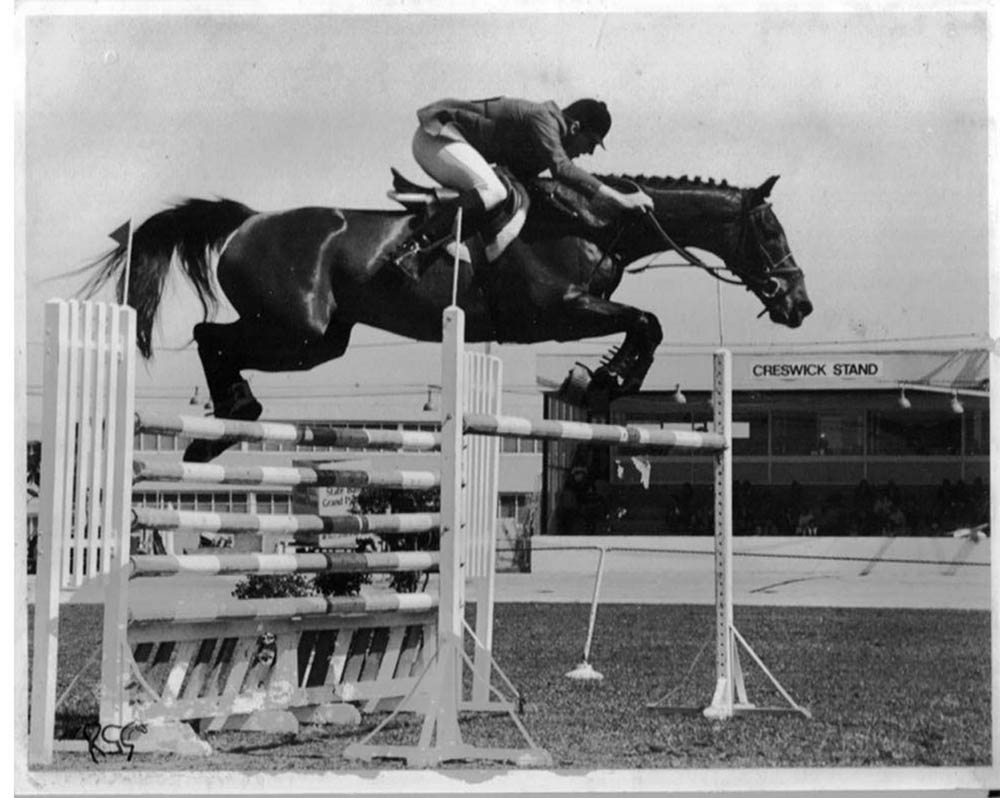
“I got the job to be on site at Gawler for the World Championships in 1986 as the site manager and assistant course designer and builder, so I moved up to Gawler from the farm and basically gave up riding horses competitively from then on,” says Wayne.
Over the years, Wayne was not only a long-standing course designer for the Australian International 3DE in Adelaide (he designed this course for eight years), but also designed the course for the South East Asian Games in Thailand in 2008 and the Pan American Games in Toronto in 2015.
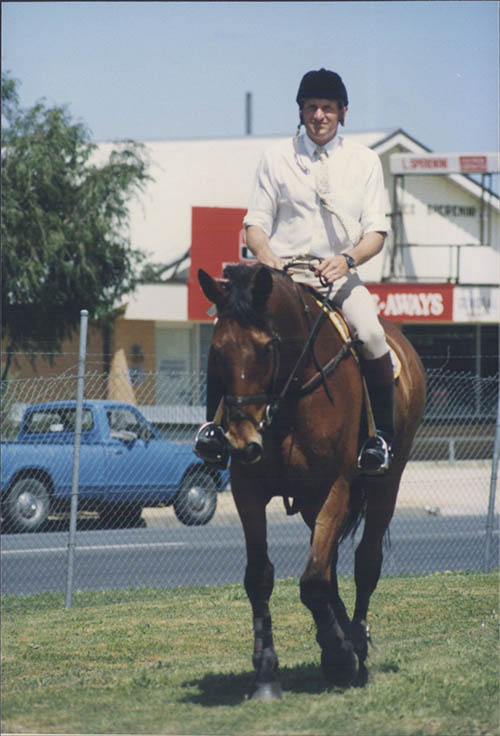
“It’s an easy course to
run around on.”
EVENT’S ORIGINS
Naracoorte Horse Trials started out as a junior 3DE in 1975 and, as Wayne explains, the idea was to educate younger riders so they could go on to compete at some of the major events such as Gawler and Melbourne.
Along the way, the FEI brought in the young rider rules and the event was changed to the South Australian Young Riders Three-Day Event. “We had the Trans-Tasman Young Rider event there a few times. It was a very popular event and the best of its kind in the country,” says Wayne.
“I took over as course designer in 1985 and ’86, then had a couple of years away from it, then I went back right through until about the end of the ’90s,” he recalls. Another 10 years off followed from 1999, and in that time South Australian rider Huey Foletta took up the role of course designer. When Huey decided to give it away in 2011, Wayne — who had just returned from teaching a course building seminar in Moscow (over the years, Wayne has mentored in several countries, including Belarus and Poland) — again picked up the reins.
There have been various changes to the format and classes over the years. When the numbers of younger riders started to drop off in the ‘90s, the event incorporated an open intermediate class as well, in a one-day event format but with the inclusion of the steeplechase and roads and tracks. Today’s event includes seven classes, from EvA 65 to CCI4*S — catering for those new to the sport as well as those looking to gain a Minimum Eligibility Requirement (MER) for the Olympic Games.
“I’m hoping that we’ll get quite a lot more entries this year because of its placing a fortnight after the Ballarat International Horse Trials and being two and a half weeks before the trot-up at Werribee (Melbourne International 3DE),” explains Wayne. “It’s a great warm-up for people before Werribee; if you need to get another MER for that event, you can do it at Naracoorte. Being predominantly flat ground with beautiful going, it’s an easy course to run around on and make time without really stressing your horse.”
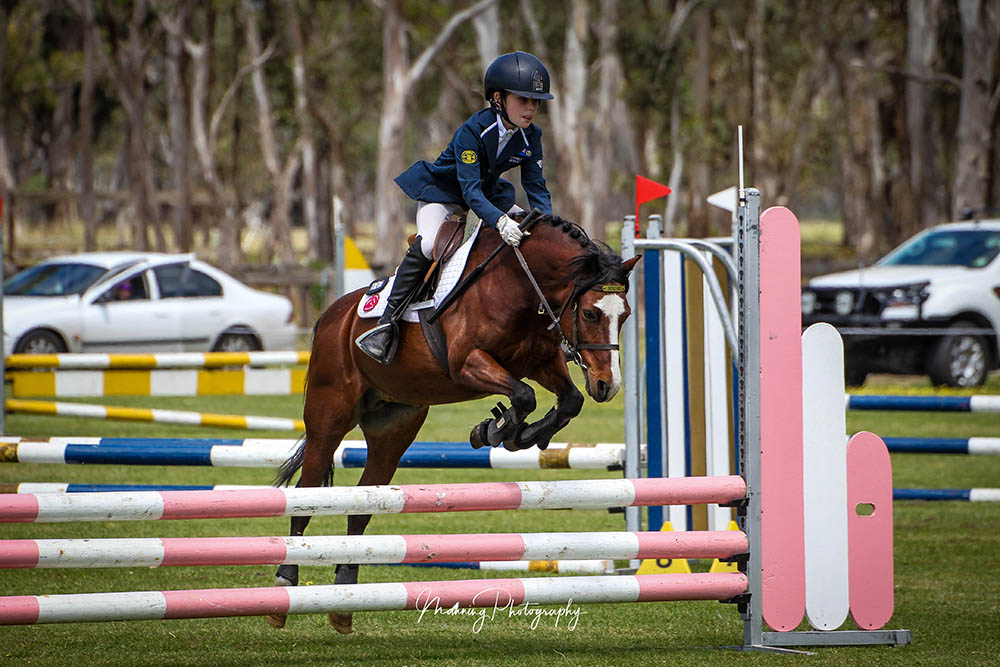
“It’s big red gum country,
just natural farmland.”
“THE BEST GOING IN AUSTRALIA”
The event is known for the quality of footing on the cross-country, which consists of predominately flat going with the Mosquito Creek winding through the property amongst old, massive red gum trees.
“It’s a fantastic venue for all-weather going, probably the best in Australia apart from maybe SIEC. It’s big red gum country; just natural farmland, sandy loam over clay, but ultimately flat with a big creek running through it,” says Wayne. The footing is one of the reasons the event has been able to run for 47 consecutive years. “The weather doesn’t stop us; you can compete all day in rain, it doesn’t make any difference, it’s just beautiful ground.”
Olympian Megan Jones, who has been coming to Naracoorte since she was 14, echoes the sentiment. “It’s the most fabulous event with the best going in Australia!” she enthuses. “I did my first Naracoorte when it was a young rider and junior-only three-day event. It’s been through lots of format and class changes over the years and I still love going every year.”
“I don’t design the course to be the biggest and best, but it’s a four-star test and a three-star test, at least as much as I can make it within the parameters of our budget and the farming life,” says Wayne of the cross country course at Naracoorte. With a handful of original jumps from the ’90s that have been brought up to today’s standard, alongside some new additions, the course has evolved over the past 30 years while still retaining its unique character.
“When we started Naracoorte, we used to use six-inch (150mm) pine rails because that’s what we could carry, what we could lift and put into place and wire them up on posts,” explains Wayne. As soon as it was possible, the event began using larger logs, as Wayne believes “it’s the safest way to go”.

“I liked the courses where I felt
like I was going somewhere.”
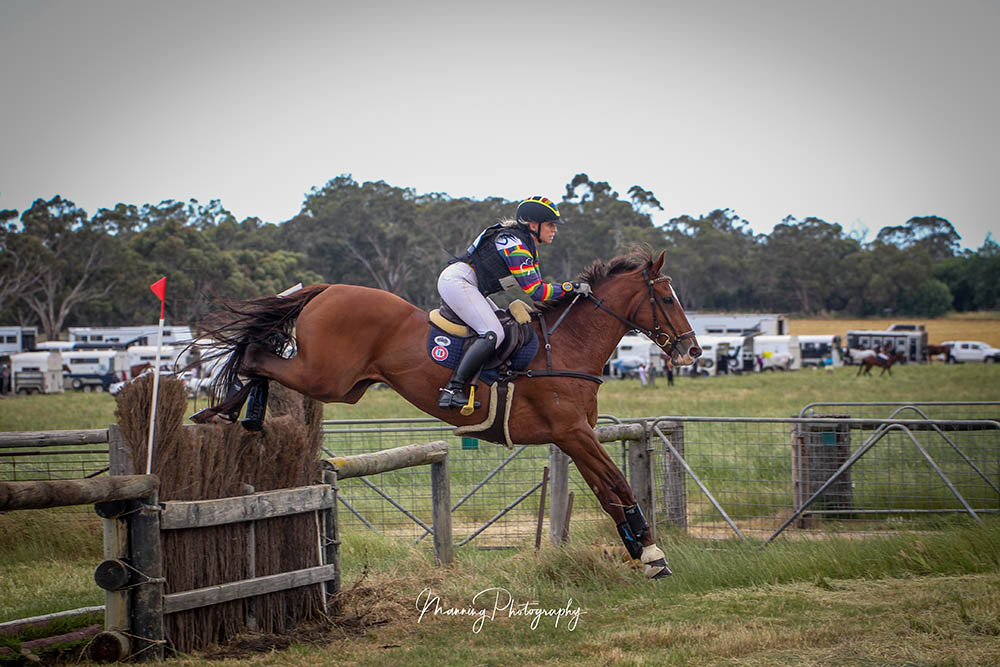
FRANGIBLES & INTANGIBLES
The overall sport of cross country has changed over the years, with new technologies and concepts around training and safety. Designed to prevent rotational falls, frangible jumps are increasingly used on courses around the world. Wayne says he wants to retain the main features and fences of Naracoorte that make it so iconic, while embracing the new, safety-focused frangible jumps — in the right locations.
While in some cases frangible technology is of benefit, Wayne is not convinced it’s the silver bullet. Many of the modern frangible fences use narrow rails and, in his opinion, “it’s using tomorrow’s technology to justify some of yesterday’s obstacles”. Wayne explains that with the smaller rails, if a horse leaves a leg, then he risks getting caught behind the rail. “If you’ve got a 300mm or bigger diameter rail, he dissipates that energy, he doesn’t get caught. He can actually pull that leg over and get free.” Therefore, Wayne feels that in some cases, going back to the use of smaller rails but with the addition of frangible pins “is artificially making difficulty out of a course.”
“The course for many, many years has used a lot of big logs and pine rails, and I’ve tried to keep that tradition and not go down the frangible fence route with the skinny rails too much,” says Wayne. In fact, this year the event has had a B-double of big pine logs delivered (300mm and up) to revitalise some of the older permanent fences.
“I think some course designers are under pressure to try and use frangibles and some don’t really understand the concept,” says Wayne. “I’ve been to so many courses where they’ve said, ‘I’m going to build a frangible jump’ so they make a portable frangible jump – it’s not a cross country jump. I teach this in seminars, that you don’t ever build a frangible fence. If you build a jump, and then if you can enhance the safety of it, you insert a frangible device… if it meets all the parameters, weight and length and so on.
“I was looking at some studies from the US, and they were making these collapsible tables. Now, if they built the tables to be solid, in exactly the same form, with exactly the same projecting ground line and face that they’ve got on these collapsible ones, they would not have had any problem at all,” explains Wayne. “See, the jump that they’ve built now, with collapsible tables, that’s completely different to the tables that they had that were causing problems. They’ve enhanced the take-off lines and the colouring — so it will be hard to say what makes them safer, their ability to collapse or the other design updates!”
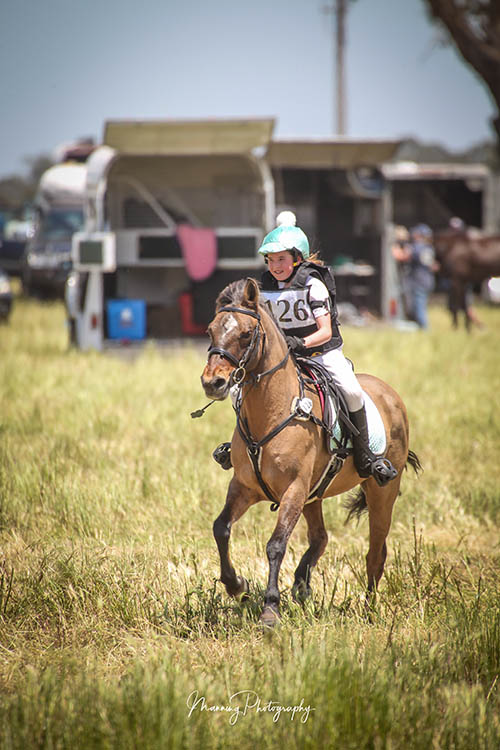
UNDER PRESSURE
“I think one of the biggest issues (faced by course designers today) is pressure by governing bodies – well-meaning people – to institute frangible devices on to every jump. And I believe that in America they’re getting to sort of space age technology. There is even a company that’s designed an app with a little sensor that goes under the horse’s girth, and it takes all the data. They can even plot his elevation and his path over the jump. I think it’s just getting too far; it’s getting away from the hands-on skill and the training and the understanding of your horse.”
Wayne also explains that these days with the increased use of the portable jumps (many of which are also frangible), it’s essential they are pegged down correctly. If they move 5cm when hit, it dissipates the energy and it may not activate the pin — but still might cause a fall. “You have to be really confident about what you’re doing and really think through the jumps you are building,” says Wayne.
“In some cases they’re (portable jumps) used as sort of an option for people that can’t actually build jumps in-ground any more. That skill has definitely been lost,” says Wayne. However, he also notes that portable jumps do have their place in the sport to an extent as they allow courses to be changed at a lower cost each year. The key is balance: of the 150 obstacles across seven grades, Naracoorte uses about 40 portable jumps out of necessity. Situated on a working farm, there are only so many locations for permanent in-ground fences as they cannot be constructed in the middle of a field that needs to be ploughed and irrigated.
“The in-ground features (at Naracoorte) are put around under the trees, in the creek lines, in the spots where they’re not farmed. Then we can make combinations further out in the paddocks with the portables. It gives us the opportunity just to vary the course a little bit year after year.”
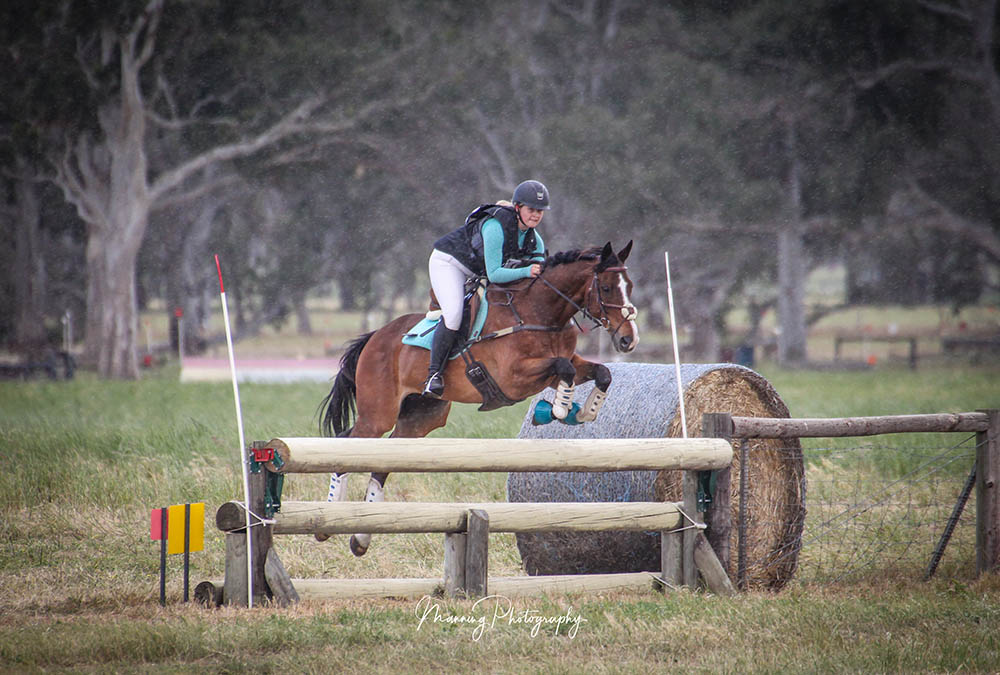


JOURNEY OVER DESTINATION
One feature of Naracoorte that Wayne takes immense pride in is the way the cross country course takes riders on a journey down into gullies, weaving between the gum trees, and across the sweeping grassland. Wayne says he wants to feel like he’s actually going somewhere when he sets out on a course. “I honestly think that a lot of the courses these days are just jumper courses, a bit like schooling in the paddock; the jumps are just grouped around. Whenever I rode cross country, I liked the courses where I felt like I was going somewhere; when I jumped it led me to the next jump, and I was actually making progress from a point in the distance, rather than just turning back and coming around and going in circles and completing show jumping tests on the cross country course.” Wayne explains that it’s also a very scenic course. “Riders will be walking the course and they just come up and say to you they can’t believe it, it’s lovely, it’s so different from other courses.”
As well as crafting technical fences with which to question each combination, Wayne says the landscape of any course is vital in creating a true test of horse and rider. “I don’t think people use terrain enough – terrain is so important for the younger horses,” he says. “You need to teach your horses to go up and down through little swales and through creeks so they can learn to ride a little bit on the side of a hill, a little uphill, a little downhill, and have the fences placed appropriately; that’s the training ground. It’s an educational process to the higher grades.
“A couple of years ago I was at a seminar in Japan and (British course designer) Eric Winter was talking about how he doesn’t mind if young horses fiddle around in the front of a ditch or going down into a little creek; they have to learn to be quick on their feet, to think for themselves. And that’s how you teach them. Any time you can put a little dip in the ground or a little rise in the ground and just use those things subtly, you’re training the horses and the riders without them really knowing it.”
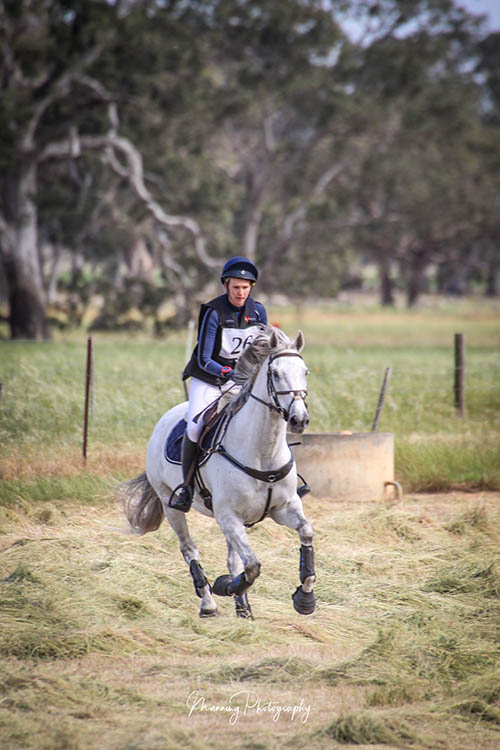
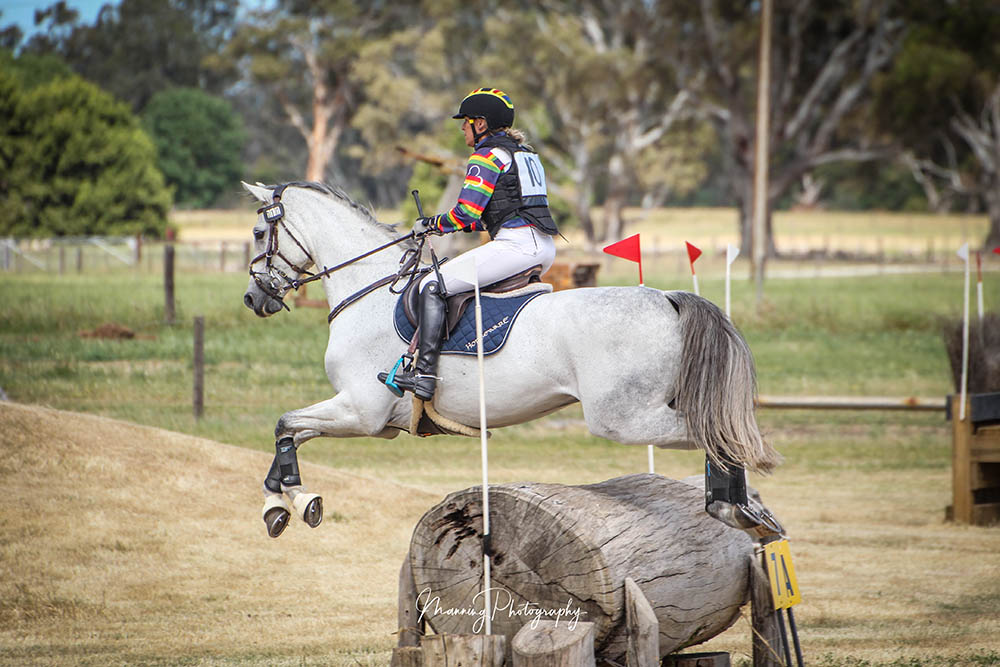
SURPRISES IN STORE
With the 2021 Naracoorte Horse Trials just around the corner, Wayne is giving prospective riders a glimpse into what he has in store for them. “We’ve got some major changes happening at our main lake complex, which is a beautiful water jump, with the trees in a circle with an island in the middle,” explains Wayne. “We’re doing some serious renovations there this year – including a bank so combinations can jump into the water. I’m also planning to add four big ditches into the course, because I’m a bit short on ditches – so that’ll be a surprise for them at about Fence 3!”
Naracoorte Horse Trials has a strong and enduring history, largely due to the support of a small but dedicated group, many of whom have a significant family connection to the inaugural committee. Over the years, the committee — both past and present — has carried with it a pride and determination to ‘make it happen’; it’s no fluke that this event is heading into its 47th consecutive year!
Part of the identity of the South Australian town, the event also provides opportunities for locals, boosts the town’s economy, and brings together a community to celebrate an event that has done so much for the area. “We use the local townspeople for as much as possible so the town benefits,” explains Wayne.
Forty-seven years is a big achievement, however, Wayne and the committee are not finished yet. The event has played host to the last two SA State Eventing Championships, and Wayne hopes to go one step further. His next aim is for the Naracoorte Horse Trials to host the Australian Eventing Championships in its 50th year in 2024. If the evolution of the event from 1975 until now is any indication, then Wayne’s vision is well on its way to becoming a reality.
The Naracoorte Horse Trials are held from 15-16 May, 2021. Entries open on 16 April via Event Secretary. EQ










